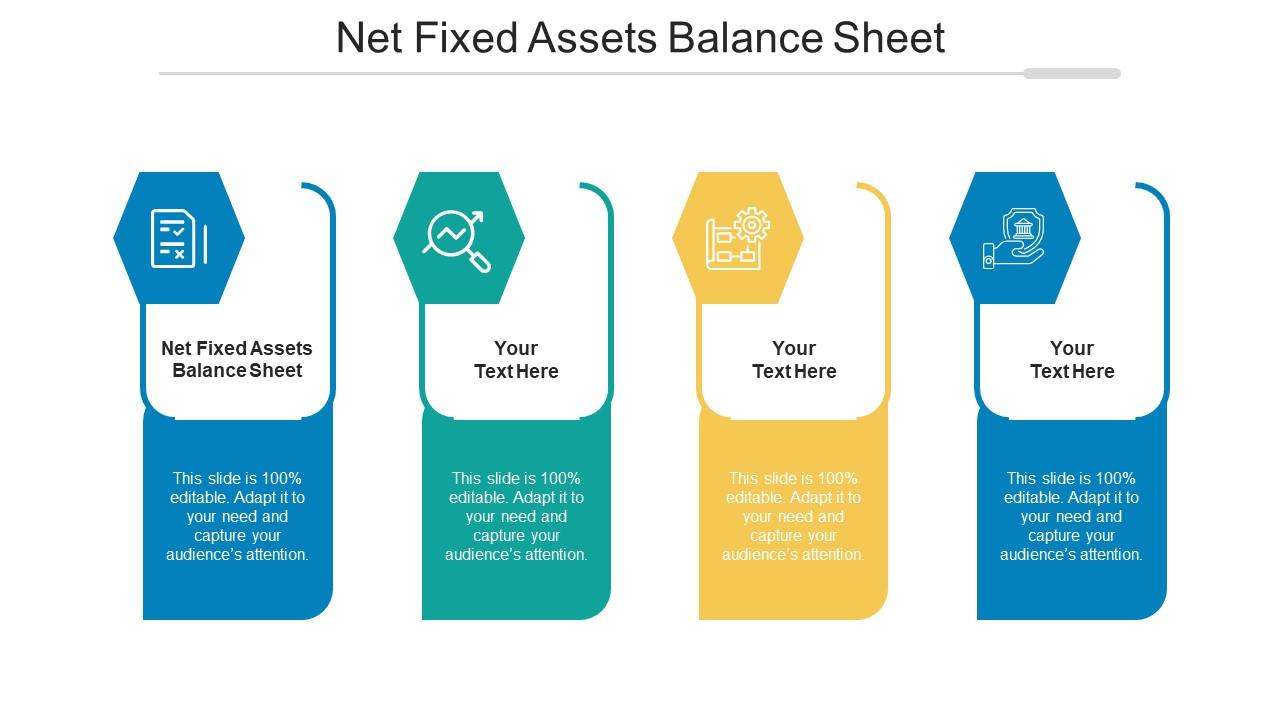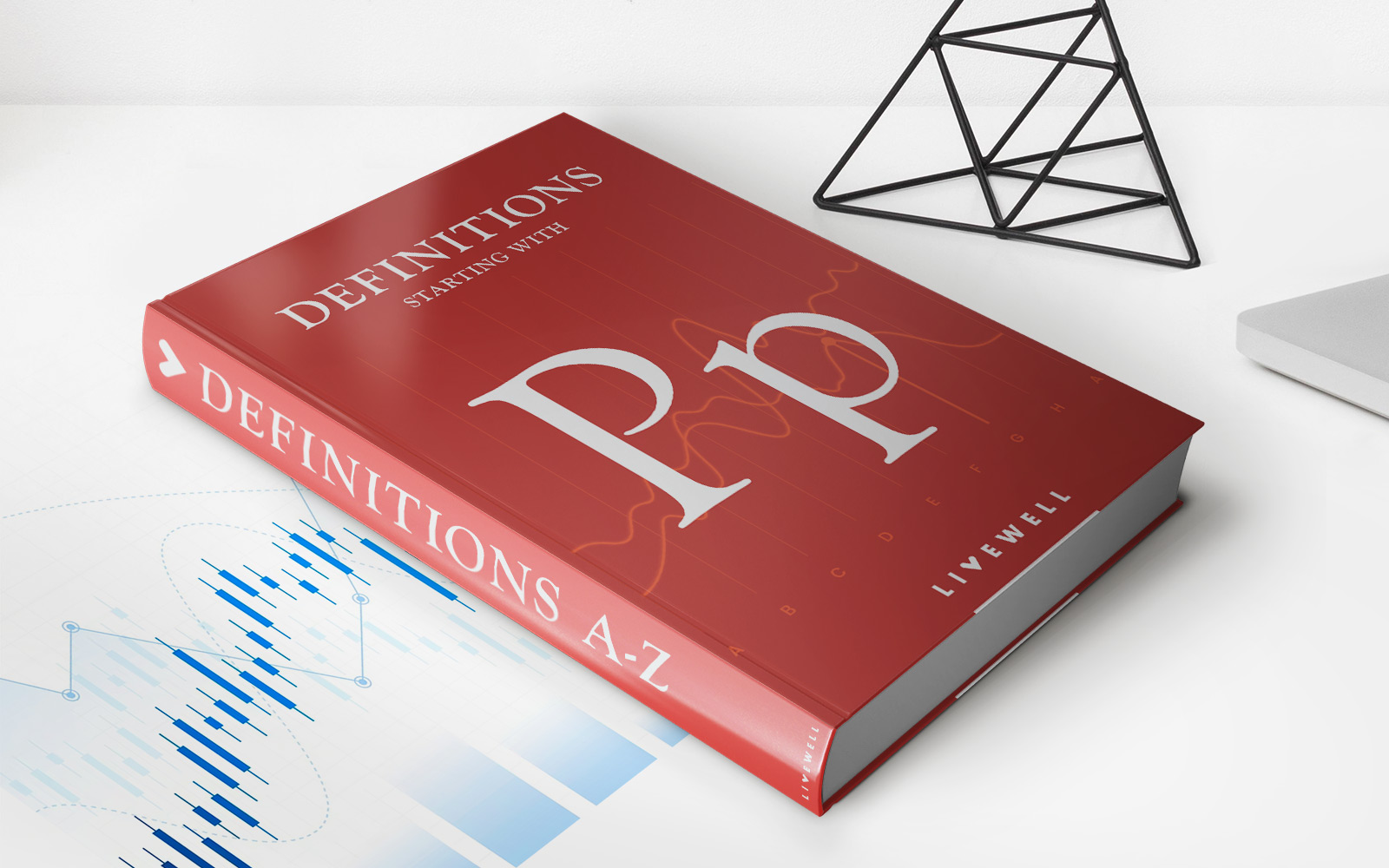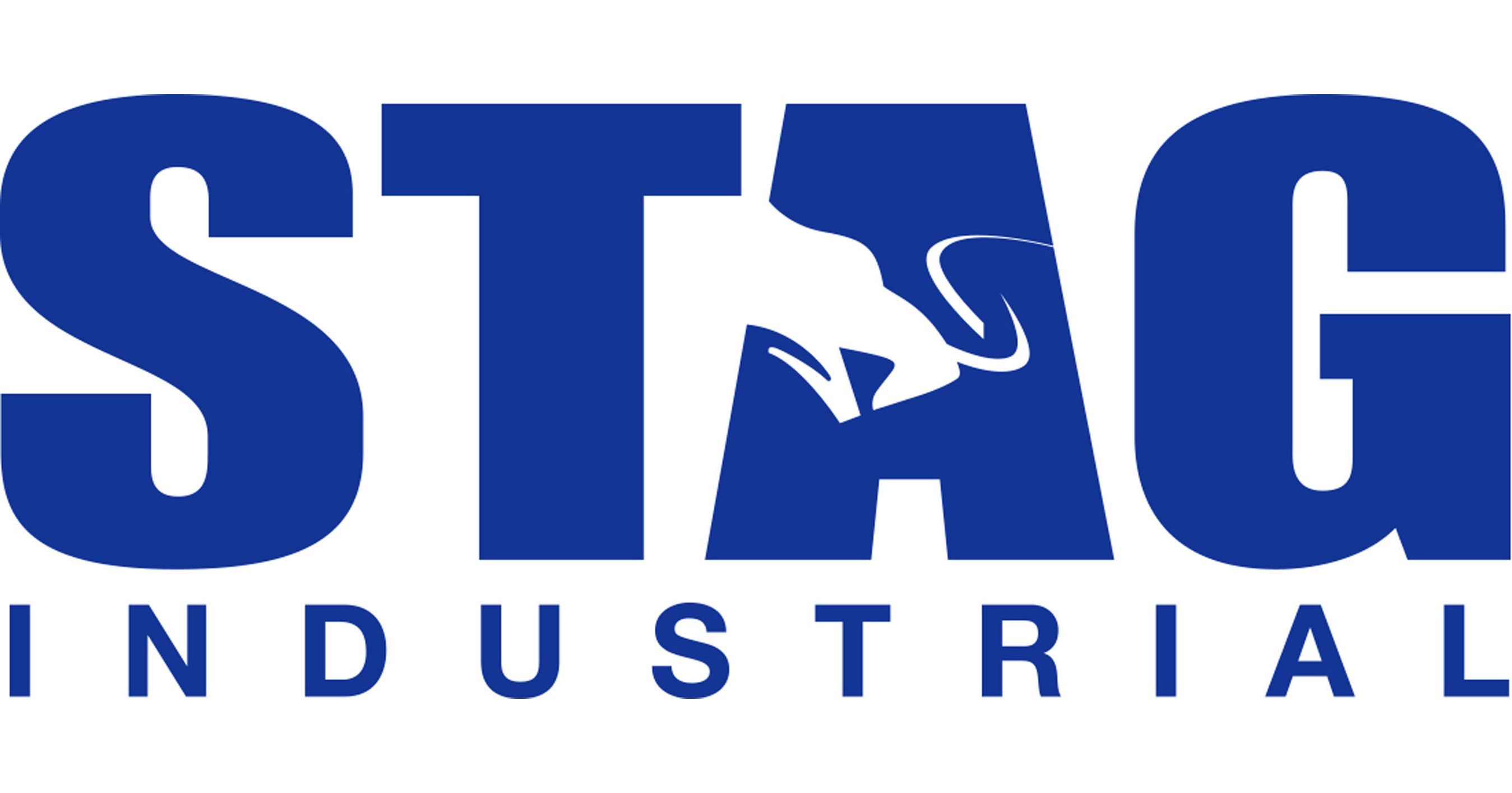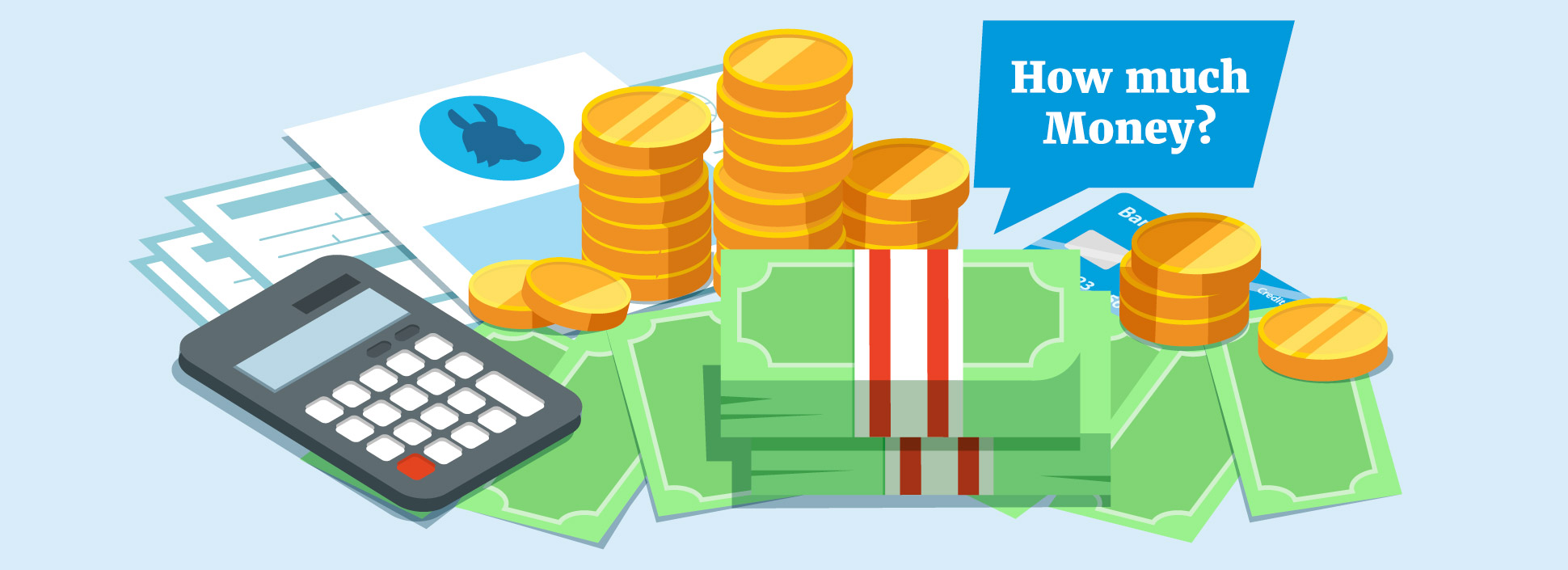

Finance
What Is A Fixed Asset In Accounting
Published: October 12, 2023
Discover the importance of fixed assets in accounting and how they affect your financial statements. Gain insights on managing and valuing assets for ultimate financial success.
(Many of the links in this article redirect to a specific reviewed product. Your purchase of these products through affiliate links helps to generate commission for LiveWell, at no extra cost. Learn more)
Table of Contents
Introduction
Welcome to the world of finance and accounting, where numbers are the backbone of business operations. One crucial aspect of financial management is the handling of fixed assets. Whether you’re a business owner, an accounting professional, or simply interested in understanding how assets are managed, this article will provide you with a comprehensive overview of fixed assets in accounting.
Fixed assets, also known as tangible assets or property, plant, and equipment (PPE), play a vital role in the success of a business. They are long-term assets that are not intended for sale in the normal course of business. Instead, these assets are essential for the production, operation, and support of a company’s goods and services.
Fixed assets can take various forms, including buildings, land, machinery, vehicles, furniture, and computers. These items have a physical presence and can be touched and seen. Unlike current assets such as cash or inventory that are expected to be converted into cash within a year, fixed assets provide long-term value to a business.
Proper recognition, measurement, and management of fixed assets are crucial to maintaining accurate financial records. These assets are recorded on a company’s balance sheet, where they are initially recognized at their cost. Over time, they are often subject to depreciation, a systematic allocation of their cost over their estimated useful lives.
Understanding the classification, recognition, depreciation, disposal, impairment, and reporting of fixed assets is essential for financial decision-making and adherence to accounting standards. In this article, we will explore each of these topics in detail, providing you with a comprehensive understanding of fixed assets in accounting.
Whether you’re a business owner looking to track your company’s valuable assets or an accounting professional responsible for providing accurate financial statements, the knowledge and application of fixed asset accounting principles are essential skills that can greatly benefit your organization.
Join us on this journey as we delve into the world of fixed assets and uncover the complexities and best practices associated with their management.
Definition of Fixed Assets
Fixed assets are long-term tangible assets that are acquired for use in the production or supply of goods and services, for rental to others, or for administrative purposes. These assets are not intended for sale in the ordinary course of business and have a useful life of more than one year. Fixed assets provide long-term value to a business and are essential for its operations and growth.
Fixed assets can take various forms, including buildings, land, machinery, vehicles, furniture, equipment, and technology infrastructure. They have a physical presence and are tangible assets that can be touched and seen. These assets are essential for the day-to-day operations of a business and contribute to its revenue generation and growth.
In the context of accounting, fixed assets are recorded on a company’s balance sheet. They are initially recognized at their historical cost, which includes the purchase price, any taxes or duties paid on acquisition, and any directly attributable costs necessary to bring the asset into working condition.
Fixed assets are not to be confused with current assets, which are assets that are expected to be converted into cash within a year. While current assets are typically more liquid and fluctuate frequently, fixed assets have a longer useful life and are typically not expected to be immediately converted into cash.
It is important for businesses to maintain accurate records of their fixed assets. This includes details such as the date of acquisition, cost, useful life, and any subsequent changes or events impacting the assets. Proper management and tracking of fixed assets not only ensure compliance with accounting standards but also enable businesses to make informed decisions regarding repairs, maintenance, and replacement of these assets. Additionally, accurate recordkeeping is essential for tax purposes, financial reporting, and asset valuation.
Now that we have defined fixed assets and their importance in financial management, let us dive deeper into the classification, recognition, and measurement of these assets to gain a comprehensive understanding of how they are accounted for in the world of finance and accounting.
Classification of Fixed Assets
Fixed assets can be classified into different categories based on their nature, function, or usage within an organization. Classifying fixed assets provides structure and helps businesses to effectively manage and track their assets. Here are some common classifications of fixed assets:
- Property: This category includes land, buildings, and other structures owned by a business. Land is a non-depreciable fixed asset as its value is considered to be permanent. Buildings and structures, on the other hand, are depreciable assets that are subject to wear and tear over time.
- Plant and Machinery: This category encompasses assets that are used in the production process, such as manufacturing equipment, industrial machinery, and tools. These assets are essential for carrying out operational activities and are subject to depreciation.
- Vehicles: Vehicles owned by a business, including cars, trucks, vans, and delivery vehicles, fall under this category. These assets are used for transportation purposes and are subject to depreciation based on their estimated useful lives.
- Furniture and Fixtures: This category includes assets such as office furniture, desks, chairs, cabinets, and fixtures used for internal administration and to support business operations. These assets are subject to depreciation over their estimated useful lives.
- Computer and Technology Equipment: This category comprises assets such as computers, laptops, servers, networking equipment, and software used for business operations and information technology infrastructure. Like other depreciable assets, computer and technology equipment are subject to depreciation.
- Intangible Assets: While not physical in nature, certain assets, such as patents, copyrights, trademarks, and goodwill, are considered fixed assets. These assets represent valuable rights, privileges, or competitive advantages and are typically recorded at their acquisition costs or fair values.
It is important for businesses to accurately classify their fixed assets to ensure proper maintenance, depreciation, and reporting. Classifying fixed assets helps businesses to identify and track the value, condition, and location of their assets. Proper classification also facilitates effective decision-making regarding repairs, upgrades, or replacements of assets based on their respective useful lives and depreciation schedules.
Now that we have a clear understanding of the different classifications of fixed assets, let us explore how these assets are recognized and measured in the accounting records.
Recognition and Measurement of Fixed Assets
Recognizing and measuring fixed assets accurately is crucial for maintaining reliable financial records. When an asset meets the definition of a fixed asset and its cost can be reliably measured, it is recognized as a fixed asset on the balance sheet. Here is an overview of the recognition and measurement process for fixed assets:
Initial Recognition: Fixed assets are initially recognized at their historical cost, which includes the purchase price, any directly attributable costs, and any taxes or duties paid on acquisition. The cost also includes expenses incurred to bring the asset into working condition, such as installation costs and transportation fees.
Subsequent Measurement: After initial recognition, fixed assets are usually measured at cost less accumulated depreciation. Accumulated depreciation represents the portion of the asset’s cost that has been allocated as an expense over its useful life through depreciation. The carrying amount of a fixed asset is the cost of the asset minus its accumulated depreciation.
Revaluation: In some cases, fixed assets may be revalued to their fair value. This is done when there are significant changes in market conditions or the asset’s value has significantly increased or decreased. Revaluation involves adjusting the carrying amount of the asset to its fair value and recognizing the revaluation gain or loss in the financial statements.
Impairment: Fixed assets are assessed for impairment when there are indicators of a potential decrease in their recoverable amount. If the carrying amount exceeds the recoverable amount, an impairment loss is recognized. The impairment loss reduces the carrying amount of the asset and is reported as an expense in the income statement.
Subsequent Expenditures: When a fixed asset is improved or upgraded, the additional costs incurred are typically capitalized if they increase the asset’s future economic benefits. Maintenance and repair costs, on the other hand, are expensed as incurred and do not form part of the asset’s cost.
To ensure accurate recognition and measurement of fixed assets, businesses need to establish an effective asset tracking system. This includes documenting the date of acquisition, cost details, useful life, and any subsequent changes or events impacting the asset. Maintaining proper supporting documentation, such as invoices, contract agreements, and depreciation schedules, is essential for both internal recordkeeping and external audits.
Now that we have explored how fixed assets are recognized and measured, let us delve into the concept of depreciation and its importance in relation to fixed assets.
Depreciation of Fixed Assets
Depreciation is a crucial aspect of fixed asset accounting as it reflects the systematic allocation of an asset’s cost over its estimated useful life. Fixed assets, except for land, are subject to depreciation due to wear and tear, obsolescence, or the passage of time. Depreciation expense is recognized in the income statement, reducing the carrying amount of the asset on the balance sheet.
There are several methods available for calculating depreciation, and businesses can choose the most appropriate method based on their specific needs and regulatory requirements. Here are some commonly used depreciation methods:
- Straight-Line Method: The straight-line method is the simplest and most commonly used method. Under this method, the depreciation expense is allocated evenly over the asset’s estimated useful life. The formula for straight-line depreciation is: (Cost – Salvage Value) / Useful Life.
- Declining Balance Method: The declining balance method applies a higher depreciation rate to the asset’s carrying amount, resulting in a higher depreciation expense in the early years of the asset’s life. This method is typically used for assets that are expected to generate higher returns in their initial years. Common variations of the declining balance method include the double-declining balance and the 150% declining balance methods.
- Units of Production Method: The units of production method calculates depreciation based on the asset’s usage or production output. This method is often used for assets that are subject to wear and tear based on the number of units produced, such as manufacturing equipment. The formula for units of production depreciation is: (Cost – Salvage Value) / Total Estimated Units of Production * Units Produced.
- Sum-of-the-Years’-Digits Method: The sum-of-the-years’-digits method assigns a higher depreciation expense in the earlier years of an asset’s life and reduces it over time. This method is based on the assumption that assets are generally more productive in their early years. The formula for sum-of-the-years’-digits depreciation is: (Remaining Useful Life / Sum of the Years’ Digits) * (Cost – Salvage Value).
The choice of depreciation method depends on factors such as the asset’s expected pattern of use, technological obsolescence, and legal and regulatory requirements. Regardless of the method chosen, the objective of depreciation is to allocate the cost of the asset fairly over its useful life, ensuring that the financial statements reflect the ongoing value of the asset.
Depreciation not only affects financial reporting but also plays a crucial role in managerial decision-making. By accurately calculating and reporting depreciation, businesses can evaluate the performance and cost-effectiveness of their assets, plan for replacements or upgrades, and determine the overall financial health of the organization.
Now that we understand the concept of depreciation, let us explore what happens when a fixed asset is disposed of or sold.
Disposal of Fixed Assets
The disposal of fixed assets occurs when an asset is no longer in use, sold, scrapped, or destroyed. This process involves removing the asset from the company’s books and recording any gain or loss on disposal. Proper disposal management ensures that the company’s financial statements accurately reflect the changes in asset ownership and helps maintain accurate records for tax and regulatory compliance.
When a fixed asset is disposed of, the following steps are typically taken:
- Determine the Disposal Method: The first step is to determine how the asset will be disposed of. This can include selling the asset, scrapping it, exchanging it for another asset, or donating it to a charitable organization.
- Calculate the Book Value: The book value of the asset is calculated by subtracting the accumulated depreciation from the original cost of the asset. This represents the carrying amount of the asset on the company’s books at the time of disposal.
- Recognize the Gain/Loss on Disposal: If the proceeds from the asset’s disposal exceed its book value, a gain on disposal is recognized. Conversely, if the proceeds are less than the book value, a loss on disposal is recognized. The gain or loss is calculated as the difference between the proceeds from disposal and the book value of the asset.
- Remove the Asset from the Books: The disposed asset is removed from the fixed assets section of the balance sheet and any accumulated depreciation associated with the asset is also removed.
- Record the Gain/Loss: The gain or loss on disposal is recorded in the income statement, typically as a separate line item, to reflect the impact on the company’s financial performance.
Properly recording the disposal of fixed assets is crucial for maintaining accurate financial records. It allows businesses to evaluate the financial impact of their asset management decisions, track the life cycle of their assets, and comply with accounting standards and regulatory requirements. Additionally, the disposal process helps businesses identify obsolete or underutilized assets, enabling them to make informed decisions regarding replacement or alternative utilization of their assets.
Disposal of fixed assets is not only limited to physical disposal but can also include the retirement or exchange of intangible assets. When intangible assets, such as patents or copyrights, are disposed of or become obsolete, businesses need to take appropriate measures to remove them from their books and recognize any resulting gains or losses.
Now that we have explored the disposal of fixed assets, let’s shift our focus to the concept of impairment and its impact on asset valuation.
Impairment of Fixed Assets
Impairment of fixed assets occurs when there is a significant decrease in the asset’s recoverable amount, which is the higher of its fair value less costs to sell or its value in use. Impairment is an important concept in fixed asset accounting, as it reflects the reduced value or benefits that an asset provides to the business and requires a downward adjustment to its carrying amount on the balance sheet.
There are various indicators that may suggest the need for an impairment test, such as significant changes in market conditions, technological advancements, legal or regulatory changes, or a decline in the asset’s physical condition or usefulness. The impairment test compares the asset’s carrying amount with its recoverable amount to determine if impairment exists.
If the carrying amount exceeds the recoverable amount, an impairment loss must be recognized. The impairment loss is calculated as the difference between the carrying amount and the recoverable amount. The loss is then adjusted against the asset’s carrying amount on the balance sheet, reducing its value.
Impairment losses are typically recognized as an expense in the income statement, under a separate line item. This ensures that the financial statements accurately reflect the diminished value of the asset and its impact on the company’s financial performance.
However, if there is a significant increase in the recoverable amount of an impaired asset in subsequent periods due to changed circumstances, the impairment loss previously recognized can be reversed. The reversal is credited to the income statement, up to the amount that would have been recognized as impairment loss if impairment had not been previously recognized.
Impairment testing is an ongoing process that requires regular evaluation of fixed assets to ensure that their carrying amounts are appropriate and reflective of their recoverable values. This helps businesses make informed decisions regarding the continuing use, repair, replacement, or disposal of impaired assets.
Managing impairments effectively is crucial for financial reporting, as it ensures that the carrying amounts of fixed assets are accurate and reflect their true economic value to the business. It also helps businesses in evaluating the performance and utilization of their assets and supports strategic decision-making in terms of maintaining, replacing, or disposing of impaired assets.
Now that we have explored the concept of impairment, let’s move on to the reporting and disclosure of fixed assets.
Reporting and Disclosure of Fixed Assets
Accurate reporting and disclosure of fixed assets is essential for providing transparent and reliable financial statements. A clear and comprehensive understanding of an organization’s fixed assets enables stakeholders, including investors, creditors, and regulatory authorities, to make informed decisions about the company’s financial health and performance. Here are some key aspects of reporting and disclosure of fixed assets:
Balance Sheet: Fixed assets are reported on the balance sheet under the non-current assets section. They are typically categorized by their nature or classification, such as property, plant and equipment, vehicles, or intangible assets. The balance sheet provides stakeholders with information about the value and composition of the company’s fixed assets, as well as their relative importance to the overall financial position of the business.
Notes to the Financial Statements: The notes to the financial statements provide additional information and disclosures about the company’s fixed assets. This can include details about the estimation of useful lives, depreciation methods used, any impairments recognized, revaluation adjustments, and commitments for the acquisition or construction of new assets. These disclosures offer transparency and assist readers in understanding the accounting policies and assumptions related to fixed assets.
Operating and Financial Review: In the management discussion and analysis (MD&A) section of the financial statements, companies often provide an overview of their fixed assets and their contribution to the organization’s operations. This can include discussions about significant acquisitions or disposals of fixed assets, changes in the company’s asset utilization or efficiency, and planned investments in new assets. The MD&A provides valuable insights into the company’s fixed asset strategy and its impact on financial performance.
Regulatory Reporting: Depending on the industry and jurisdiction, organizations may have specific reporting requirements for fixed assets. These requirements can include detailed asset registers, valuation reports, and compliance with specific accounting standards or regulations governing the recognition, measurement, and disclosure of fixed assets. Compliance with these regulations is essential for accurate and consistent reporting of fixed assets.
Audit and Independent Verification: Fixed assets are often subject to independent verification and audit procedures to ensure that their carrying amounts are reasonable and supported by sufficient evidence. The verification process can include physical inspections, review of supporting documentation, and assessments of valuation methods and assumptions. The independent verification provides assurance to stakeholders that the reported fixed assets are reliable and accurately represent the organization’s assets and their values.
By providing transparent and comprehensive reporting and disclosure of fixed assets, organizations demonstrate their commitment to financial integrity and accountability. This enables stakeholders to assess the financial health, performance, and potential risks associated with a company’s fixed assets. It also helps in fostering trust and confidence among investors, lenders, and other stakeholders.
Now that we have explored the reporting and disclosure of fixed assets, let’s conclude our overview of fixed asset accounting.
Conclusion
Fixed assets play a critical role in the operations and growth of businesses across various industries. They are long-term tangible assets that provide value and support to organizations, enabling them to produce goods and services efficiently. Proper management and accounting of fixed assets are essential for accurate financial reporting, decision-making, and compliance with accounting standards.
In this article, we have explored the definition of fixed assets and their classification into different categories based on their nature and purpose. We have also discussed the recognition and measurement of fixed assets, including the initial recognition at cost and subsequent measurement through depreciation. The concept of impairment and its impact on asset valuation have also been elucidated.
Furthermore, we have delved into the disposal of fixed assets, highlighting the importance of accurately recording asset disposals and recognizing any gains or losses. Additionally, we have emphasized the significance of reporting and disclosure of fixed assets, enabling stakeholders to make informed decisions and understand the organization’s financial position.
Managing fixed assets effectively requires ongoing monitoring, regular evaluations for impairment, and sound financial practices. By maintaining accurate records, classifying assets correctly, calculating depreciation correctly, and providing transparent reporting, companies can optimize their asset utilization, plan for replacements or upgrades, and make informed business decisions.
It is important for businesses to stay updated with any changes in accounting standards or regulations governing fixed asset accounting to ensure compliance and maintain financial integrity. Engaging with accounting professionals or seeking guidance from experts can help businesses navigate the complexities of fixed asset accounting and implement best practices.
In conclusion, understanding and effectively managing fixed assets is crucial for the success and growth of businesses. By adhering to proper accounting principles, accurately valuing and depreciating assets, and providing transparent reporting and disclosure, companies can effectively track and manage their fixed assets, ultimately enhancing their financial performance and ensuring long-term sustainability.














